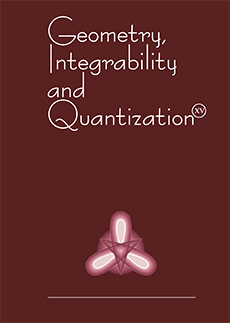Abstract
The idea of wave mechanics leads naturally to assume the well-known relation $E=\hbar \omega $ in the specific form $H=\hbar W $, where $H$ is the classical Hamiltonian of a particle and $W$ is the dispersion relation of the sought-for wave equation. We derive the expression of $H$ in a curved space-time with an electromagnetic field. Then we derive the Dirac equation from factorizing the polynomial dispersion equation corresponding with $H$. Conversely, summarizing a recent work, we implement the geometrical optics approximation into the canonical form of the Dirac Lagrangian. The Euler-Lagrange equations are thus obtained for the amplitude and the phase of the wave function. From them, one is led to define a four-velocity field which obeys exactly the classical equation of motion. The complete de Broglie relations are then derived as exact equations.
Information
Digital Object Identifier: 10.7546/giq-13-2012-96-106


